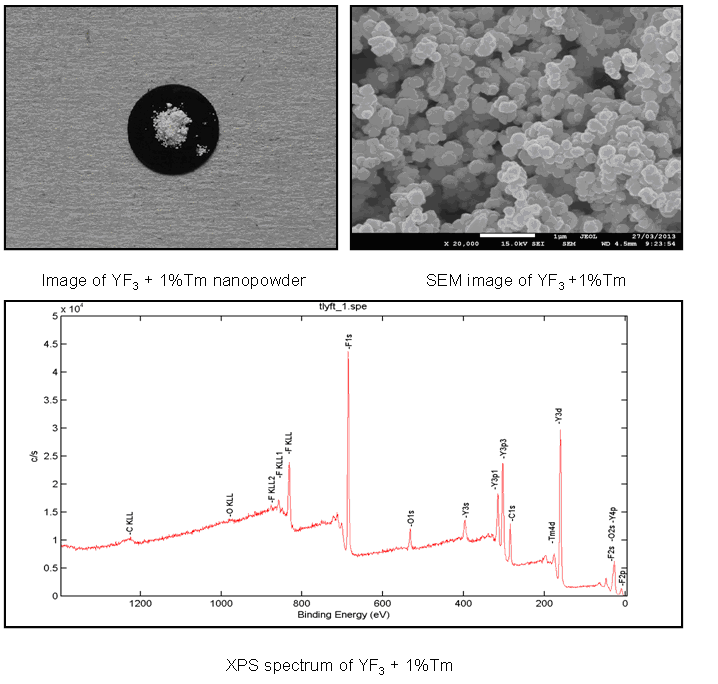Up-conversion phosphors emit visible light after excitation by lower energy photons, usually in the near infrared spectral range. They have potential applications in different fields of science and technology, including luminescent displays, optoelectronic devices or lasers and amplifiers. Recently, a great interest has been devoted to their use in infrared (IR) and visible imaging for biological research and medical diagnosis, because of their important advantages when compared to the traditional biolabels such as organic dyes, semiconductors or metallic nanoparticles. For example, the up-conversion mechanisms are favourable compared to traditional down-conversion ones due to the higher penetration depth of light achieved in tissues under IR excitation wavelengths. Moreover, this excitation scheme also accounts for the lower photo-damage to living organisms, and the possibility of obtaining a higher spatial resolution and weak autofluorescence from cells or tissues. Additionally, it is possible to obtain nanophosphors with low toxicity, which is also one of the main points of interest in comparison with other bio-labels. Rare-earth (RE) based up-conversion nanophosphors are based on the combination of ion pairs acting as sensitizers–activators that allow a variety of excitation–emission choices.[1]
In the present work we have synthesized nanopowders using thermal decomposition method as follows. Firstly, the Y2O3 was dissolved in acetic acid, RE2O3 in diluted nitric acid and NH4F in deionized water. Next all solutions were mixed together and stirred for 6 h at 70 ºC. During slow evaporation of the mixture the volume was decreased 5 times. Then the concentrated solution was dried in 150C in order to total remove of water. Next the dry powder was calcined in air atmosphere in 400oC during 2 h. Electronic structure and atomic concentration of samples were characterized by the following method X-ray photoelectron spectroscopy (XPS) 
References:
1. Marta Quintanilla, Nuria O. Nunez, Eugenio Cantelar, Manuel Ocana and Fernando Cusso, Tuning from blue to magenta the up-converted emissions of YF3:Tm3+/Yb3+nanocrystals |